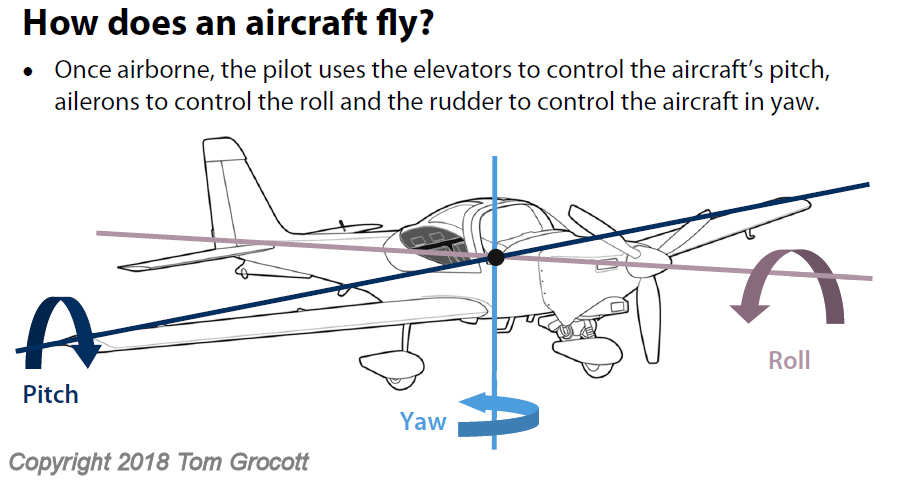The History of Flight for Air Cadets
The article below is an extract from the First Class Air Cadet Resource Book.
Please note this information is subject to Copyright 2018 Thomas Grocott. Not for reproduction. Thomas Grocott has asserted his right to be identified as author of this work in accordance with the Copyright, Designs and Patents Act 1988. All rights reserved.Some images in this publication are Crown Copyright and contain public sector information licensed under the Open Government Licence v3.0.
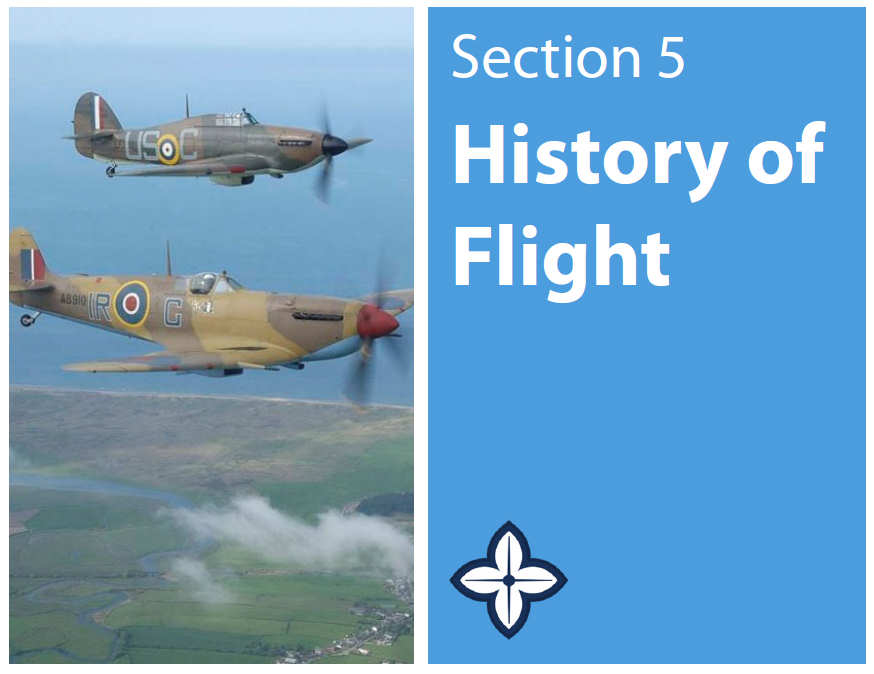
LO1: Have an appreciation of the history of lighter-than-air craft and the methods of control applied to airships.
• Identify the key milestones in the history of lighter-than-air craft.
• Describe how airships are controlled.
LO2: Have an appreciation of the history and application of heavier-than-air craft.
• Identify the key milestones in the history of heavier-than-air craft.
• Demonstrate the principle of heavier-than-air flight.

Throughout history, man has tried to become airborne. Early attempts tried to copy the flight of birds with little success. The start of mans journey into the air wasn't by copying birds, but through lighter-than-air balloons and airships.
Leonardo Da Vinci
• Da Vinci was an Italian artist born in 1452.
• He also liked to invent things and designed aircraft inspired by wings of birds or bats.
• His designs were never tested, but they would be too heavy to fly successfully.
The Montgolfier Brothers
• The Montgolfier Brothers built the first hot air balloon and got people in the air for the first time. It’s first unmanned flight was in France on the
25th April 1783. It climbed 1000ft!
• In September 1783 a sheep, duck and cockerel became airborne. At the end of the year, two passengers flew in the balloon for 25 minutes, traveling 9km.
Airships
• J Charles designed the first airship, also in 1783. It was filled with hydrogen, which is lighter than air.
• On the 1st December a 36km flight was made by J Charles and his assistant from Paris.
• The balloon was attacked by French villagers who thought it was monster!
• Airships were considered the way forward for flight as they were comfortable and controllable, using little fuel.
The Hindenburg Disaster
• On Thursday May 16th 1937 the Hindenburg airship was destroyed.
• 36 were killed out of 97 passengers and crew.
• An electrostatic discharge (a spark) ignited hydrogen inside the airship, causing it to explode be swallowed in flames.
• This disaster signalled the end of the airship era.
• Airships are now filled with helium which is lighter-than-air, but not flammable.
Airships Today
• Modern airships are made from strong lightweight materials and have powerful engines.
• They could be a good alternative to conventional aircraft as they use less fuel.
Summary
• The era of lighter-than-air flight began in 1783, with the first hot air balloon and airship flights taking place in France.
• This ended with the Hindenburg disaster in 1937.
• Modern airships use helium, which is much safer than hydrogen as it is not flammable.

Inside an airship are two inflatable air bags. These bags keep the pressure of the helium gas slightly higher than the pressure outside. This controls the rate of climb or descent and prevents the airship from over inflating when it rises and sagging when it descends. Pumping air from one bag to another can help with balance.
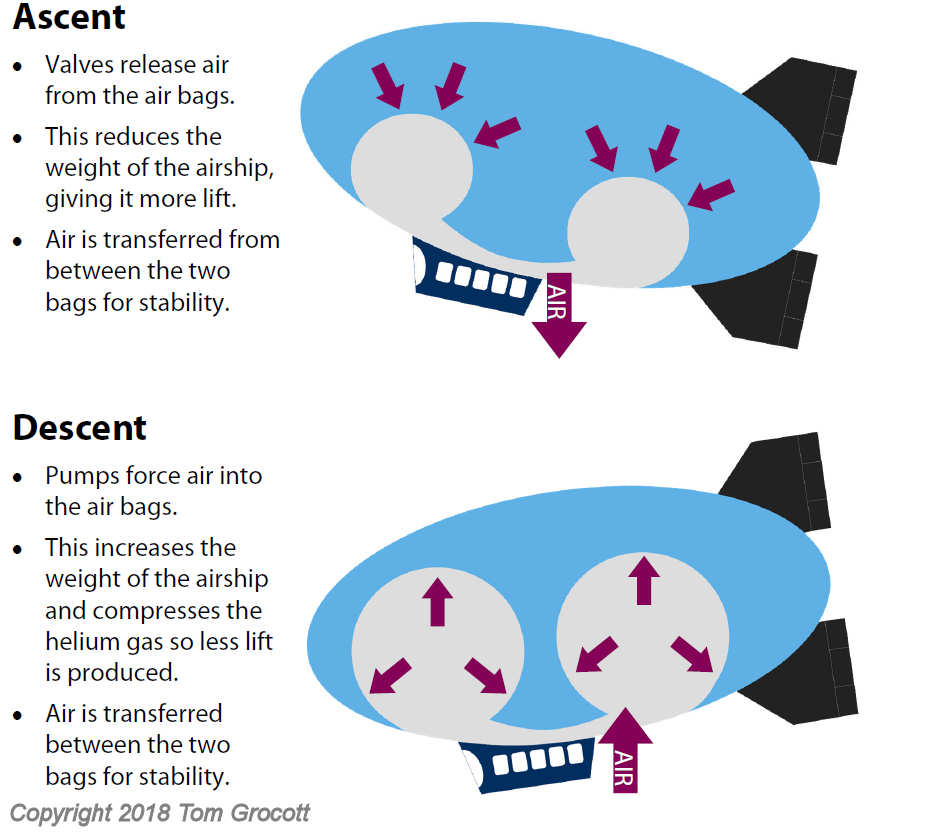
Ascent
• Valves release air from the air bags.
• This reduces the weight of the airship, giving it more lift.
• Air is transferred from between the two bags for stability.
Descent
• Pumps force air into the air bags.
• This increases the weight of the airship and compresses the helium gas so less lift is produced.
• Air is transferred between the two bags for stability.
Summary
• A valve draws air out of an airship so it ascends.
• A pump draws air into an airship so it descends.

The first powered heavier-than-air flight was taken by the Wright Brothers in 1903. But the history of heavier-than-air flight goes back much further than this, and the development of aircraft after this is substantial.
Kites
• 3000 years ago the Chinese flew kites, which they used as signalling devices.
• Believed to be the first man-made device that flew.
• The technology of kite flying quickly spread throughout the world.
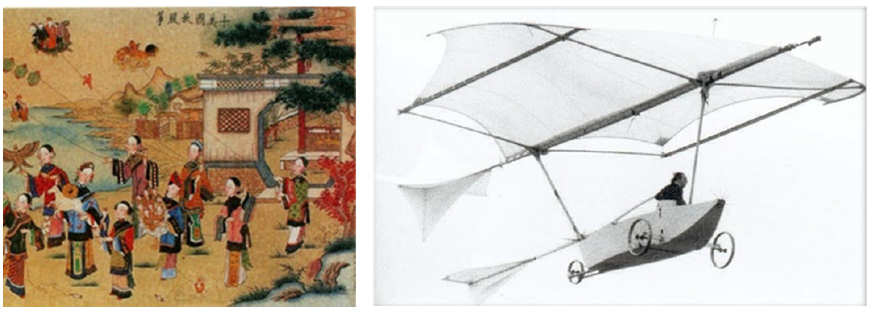
Sir George Caley
• In 1804 Sir George Caley built the very first glider (above right).
• It could only carry a small boy and had no way of steering but it was stable and could fly many metres.
• Confirmed the principles of heavier-than-air flight were possible, as the air supported the weight of the glider.
John Stringfellow
• John Stringfellow developed a tiny steam engine in 1848.
• This was not very powerful, but could be used to power a 3m wingspan model which flew over 100m.
• The model had special propellers to help with stability but attempts to make a larger, more powerful engine were later unsuccessful.
Otto Lilienthal
• In the late 1800’s Otto Lilienthal built lightweight gliders which he used in 1000’s of flights.
• He built 18 altogether and was the first person to make repeated glider flights.
• An early version of a hang glider.
• He died in 1896 in a flying accident, aged 48. He inspired the Wright Brothers.
Gottlieb Daimler
Daimler developed a lightweight single cylinder engine that could be used in smaller vehicles and in 1885 put his engine into the worlds first
motorcycle. This engine was also light enough to be used for aircraft propulsion.
The Wright Brothers
• On the 17th November 1903 The Wright Brothers took their first aircraft for a test flight.
• It flew 36m. Later tests that day resulted in 260m of controlled flight.
• They continued to improve their design and ended up setting a world record in 1908 with a 2hr 20 minute flight that flew 77 miles.
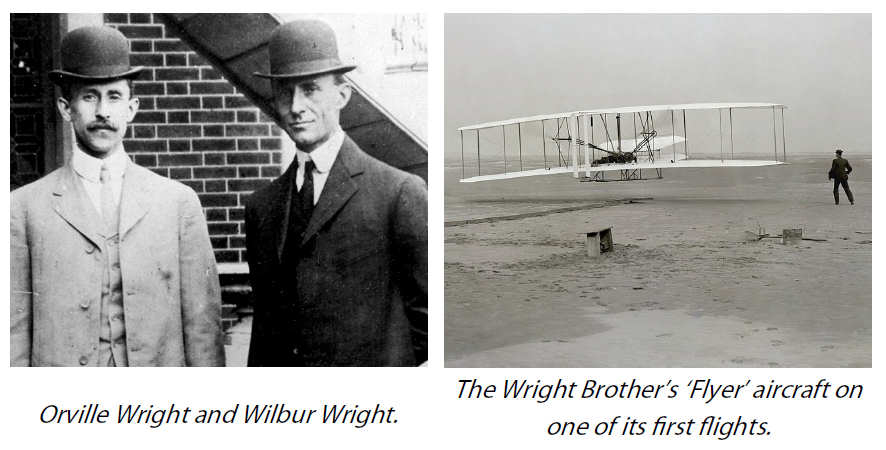
World War I and 1919
• During WW1 (1914-1918) technology developed rapidly and many armed forces began using aircraft.
• They were originally used for reconnaissance and later for bombers and fighters as the war and technology progressed.
• In 1919 a converted Vickers Vimy bomber was the first aircraft to cross the Atlantic. It was Flown by Alcock and Brown.
Amy Johnson
• In 1930 Amy Johnson (pictured below left) became the first women to fly solo from England to Australia In Gipsy Moth (pictured below centre).
• She often flew solo, or with her husband (pictured below right), and set numerous long distance records in the 1930s.
• Amy Johnson flew for the Air Transport Auxiliary during WWII and died during a ferry flight in January 1941 aged 37 years.
Summary
• Sir George Caley built the first glider in 1804. It carried a small child.
• Otto Lilienthal built an early version of a hang glider and completed 1000’s of flights during the late 1800’s.
• The Wright Brothers completed the first flight in their ‘Flyer’ in 1903.
• Aircraft technology progressed rapidly during WWI.
• Amy Johnson was the first female to fly solo from England to Australia.

The wings on an aircraft generate lift. This enables the aircraft to get off the ground. There are also control surfaces on an aircraft which help the aircraft to take off and land, bank and turn.
How does an aircraft get off the ground?
• For an aircraft to get off the ground it needs to generate lift. A wing is the perfect shape for this.
• As air flows around a wing, its shape means air travels faster over the top of the wing than the bottom.
• This makes the pressure lower on the top of the wing.
• This causes the air at the bottom of the wing try to move upward, pushing the wing upward with it.
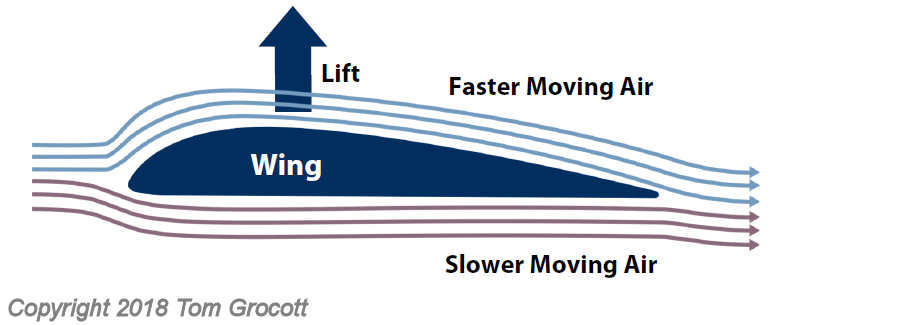
How does an aircraft fly?
• Once airborne, the pilot uses the elevators to control the aircraft’s pitch, ailerons to control the roll and the rudder to control the aircraft in yaw.
